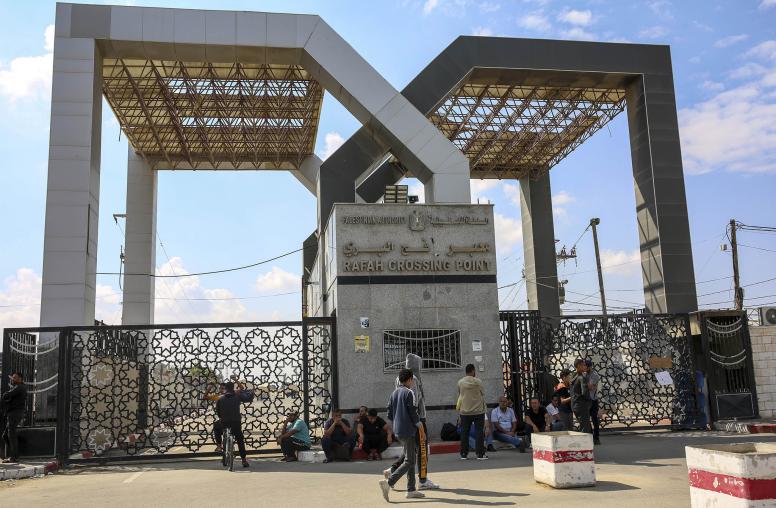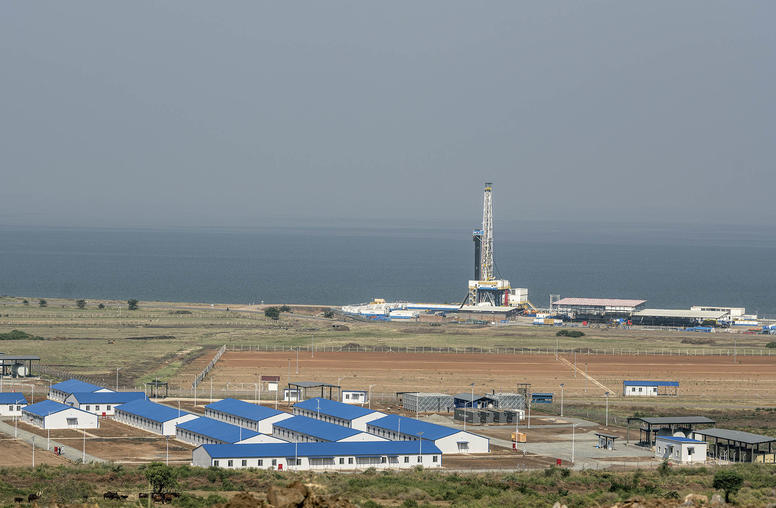President Obama: U.S. Supports Democratic Movements in the Middle East and North Africa, Pushes for Middle East Peace
President Barack Obama, in a wide-ranging policy address on the Middle East and North Africa, put U.S. support squarely behind the pro-reform, democratic movements reshaping the region and called for continued U.S. efforts to support Israeli-Palestinian peacemaking.
May 19, 2011
President Barack Obama, in a wide-ranging policy address on the Middle East and North Africa, put U.S. support squarely behind the pro-reform, democratic movements reshaping the region and called for continued U.S. efforts to support Israeli-Palestinian peacemaking--with an eventual outcome of two states with two peoples coexisting peacefully with borders based on those in place before a 1967 war.
“We face a historic opportunity,” the president said of the upheaval that has swept the region and overturned governments in Tunisia and Egypt. “We have the chance to show that America values the dignity of the street vendor in Tunisia more than the raw power of the dictator. There must be no doubt that the United States of America welcomes change that advances self-determination and opportunity.” Making reference to the role of satellite television, Internet, social networks and cell phones in the uprisings, President Obama stated, “the events of the past six months show us that strategies of repression and strategies of diversion will not work anymore.” The president spoke May 19 at the State Department in Washington.
He urged Yemen’s president, Ali Abdullah Saleh, “to follow through on his commitment to transfer power” and Bahrain to end “mass arrests and brute force” against protesters, saying, “the only way forward is for the government and the opposition to engage in a dialogue, and you can’t have a real dialogue when parts of the peaceful opposition are in jail.”
One day after new U.S. sanctions were announced, President Obama called on Syrian President Bashar al-Assad, whose government is sending Army forces to crack down on demonstrators, to “lead that transition [to democracy] or get out of the way.” He also criticized Syria’s ally Iran as a government that “represses its own people at home” in peaceful protests.
The speech represented the most significant White House effort to describe the U.S. role in the Arab world since anti-government turmoil erupted in Tunisia last December, and it follows on President Obama’s address in Cairo in June 2009 that focused on U.S. relations with Muslims around the world. President Obama briefly mentioned U.S. efforts to wind down the war in Iraq, stop the Taliban’s “momentum” in Afghanistan and kill al-Qaida leader Osama bin Laden. | After Osama bin Laden >>
The speech was closely followed in the Middle East and North Africa, where views on the Obama administration’s approach to what is being called the “Arab Spring” vary widely. It should help put doubts about the U.S. commitment to supporting democratic change to rest, according to Qamar-ul Huda, a senior program officer and scholar on Islam at the United States Institute of Peace (USIP). “President Obama’s unambiguous support for democratic reform, youth, religious tolerance, gender equality and specific economic opportunities for the Middle East and North African region will be enthusiastically received,” Huda said. “I think youth involved with the uprisings wanted to hear the President’s recognition of their achievements and needed to confirm America’s long-term support for democracy and justice.”
USIP’s Manal Omar, director of Iraq programs, called the address “a demonstration of political will to discuss the difficult issues straightforwardly.” In touching on such sensitive topics as the Shiite majority in Bahrain, the rights of women and minorities and what President Obama termed the Israeli “occupation” of Palestinian territory, Omar said, the president served to “address the region’s concerns of a U.S. policy that has been accused of double standards.”
Some veteran analysts disagree. “The Arab world is likely to be somewhat disappointed,” said Robin Wright, a Jennings Randolph senior fellow at USIP. “On the issues that now consume their daily lives, he offered lofty principles but little substantively new in terms of concrete action or admonitions to autocrats.” Wright added, “The president also did not substantively close the gap in U.S. policy—what Washington is saying or doing—on protests over the same issues in Libya, Syria and notably Bahrain.” President Obama, noted Wright, did not mention Saudi Arabia, a U.S. ally whose role in siding with the region’s status quo governments over the democracy movements is generating controversy.
The president called for building on current “efforts to broaden our engagement beyond elites, so that we reach the people who will shape the future—particularly young people.” Calling poverty, joblessness and lack of opportunity a “tipping point” for many Arabs who came out against their governments, President Obama outlined several new U.S. steps to promote trade and investment in the Middle East and North Africa: international collaboration to help stabilize the Tunisian and Egyptian economies, up to $1 billion in debt relief and $1 billion in loan guarantees for Egypt, the creation of enterprise funds for both countries and U.S. backing for the European Bank for Reconstruction and Development to bolster democratic and economic transitions in the Middle East and North Africa as it did in Europe after the Cold War.
USIP’s Dan Brumberg likened this ambitious agenda to the Marshall Plan, but cautioned, “translating this complex blueprint into effective policies will be the administration’s greatest challenge.” | Read Dan's latest analysis >>
President Obama also used the occasion to reject suggestions that the United States, facing major political obstacles in the region to promoting Palestinian-Israeli peace, should abandon such efforts. “I disagree,” he said. “At a time when the people of the Middle East and North Africa are casting off the burdens of the past, the drive for a lasting peace that ends the conflict and resolves all claims is more urgent than ever.”
The president acknowledged that “expectations have gone unmet” for progress but said that the basis of Palestinian-Israeli negotiations is “clear” and “the borders of Israel and Palestine should be based on the 1967 lines with mutually agreed swaps, so that secure and recognized borders are established for both states.” He recommended “moving forward now” on the issues of territory and security, even if “two wrenching and emotional issues”—the future of Jerusalem and the fate of Palestinian refugees--remain unresolved.
President Obama’s position, said USIP Senior Program Officer Scott Lasensky, puts the United States “formally on record, in no uncertain terms, advocating for an initial deal based on the 1967 lines, with land swaps, and agreed security provisions. The administration had danced around that formulation for some time….The president was pretty blunt.”
Lasensky said that President Obama “does not want to see this longrunning conflict get in the way of historic changes now taking place in the Arab world.” At the same time, Lasensky argued that President Obama was reflecting caution about peace prospects as well: “The undercurrent of the speech was that a lot still needs to be sorted out in terms of political transformations in key Arab states before his administration is going to undertake a major push on the peace process. ‘Borders and security’ is all the White House seems to think the traffic can bear, so to speak.” | Read Scott's On the Issues >>
Explore Further
- Eye on the Middle East and North Africa: Experts from the U.S. Institute of Peace (USIP) are closely following developments throughout the Middle East and North Africa. In a series of reports and interviews, they cover a wide range of issues.
- President Obama’s Speech an “Evolution” for U.S. Policy, Says USIP Expert
News Feature | May 20, 2011 - President Obama's Speech and the Arab-Israeli Conflict
On the Issues by Scott Lasensky | May 19, 2011



